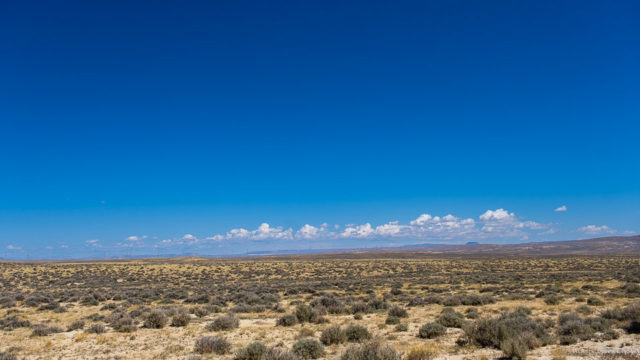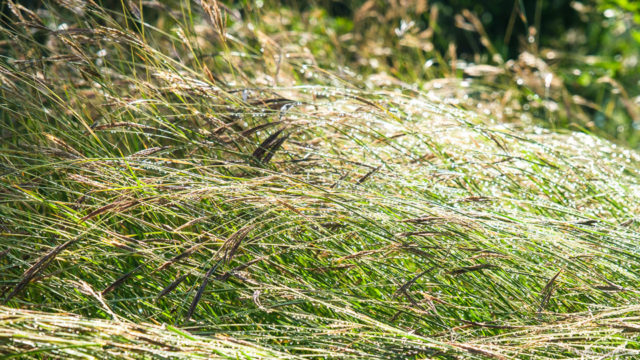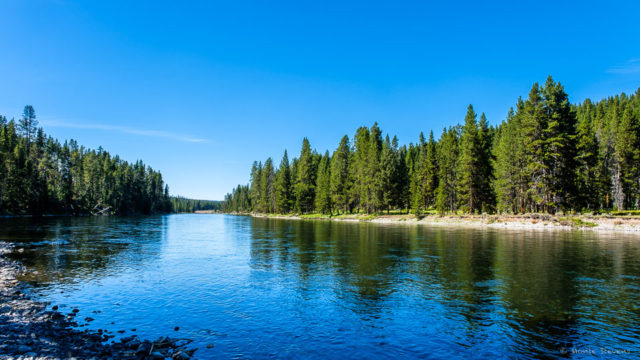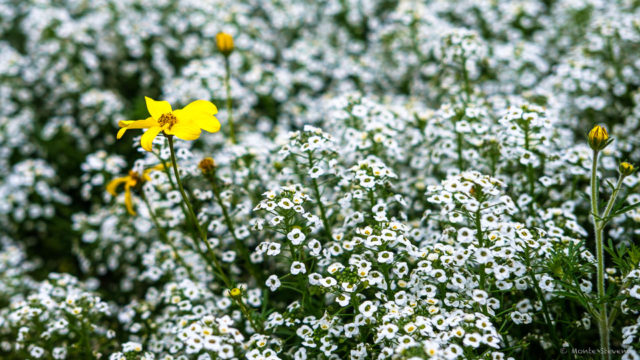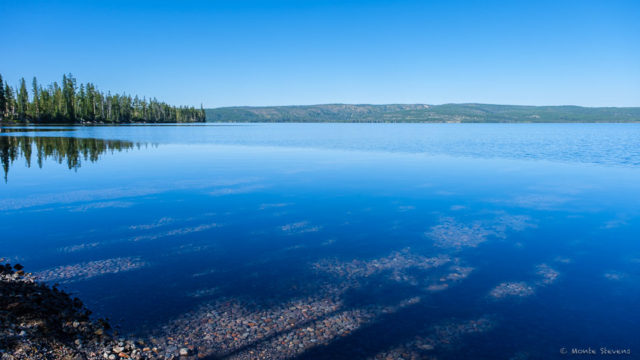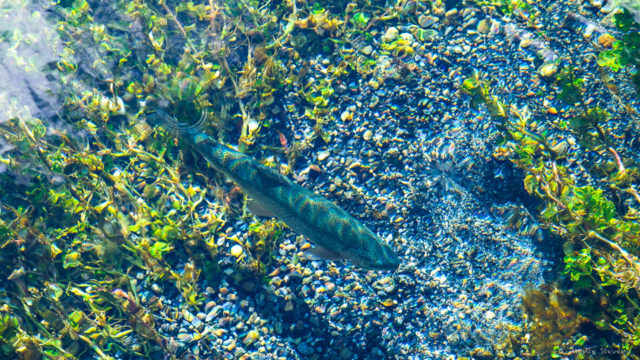This was taken north of Rock Springs, Wyoming along US Highway 191 on my trip to West Yellowstone last month. A lot of open sagebrush, no trees and almost endless blue sky. You can see for miles and the sagebrush dominates the landscape. You may look at this and think of it as a barren and desolate place, especially if you’re from anywhere east of the Mississippi where trees abound. And when you stop to take in this view you won’t believe the silence that surrounds you. But, even though it is a rugged and harsh environment what you see is a complex of ecosystem. These sagebrush ecosystems provide important food and cover for mammals, birds, reptiles and amphibians, and especially winter habitat for big game species and other wildlife. So probably somewhere in this image is a Black-footed Ferret, Great Basin Gopher Snake, White-tailed Prairie Dog, Greater Short-horned Lizard, Red-tailed hawk or Sage Thrasher. And trust me, somewhere in there is an ant or two or three…
-
-
Change of Seasons
Leaves have begun changing colors and are making their end of life journey to blanket the ground with their colors. Canada Geese are loudly flying in formation as they return for the fall and winter months. Mornings are becoming cooler and the heavy dew will be turning to frost soon. The sun has begun to rise farther south on the horizon, and later, signifying the season of shorter days. Jackets will come out of the closets to help us face those brisk mornings. Homes will begin to fill with the aroma of steaming pots of chilli soup to enjoy on cold evenings. All signs that the change of seasons is upon us.
-
After the Rain
A good photograph will prove to the viewer how little our eyes permit us to see. Most people, really, don’t see—see only what they have always seen and what they expect to see—where a photographer, if he’s good, will see everything. And better if he sees things he doesn’t expect to see.
Leon LevinsteinA light rain or drizzle dominated most of yesterday. It made my 54th class reunion picnic a bit cold and damp. A good time was had but I was still chilled a couple hours afterwards. Clear skies and sunshine this morning. The red fescue grass was bowing down from the weight of glistening raindrops begging to be seen and photographed.
-
the One…
You recognize your God as everyone’s God. And not only among Jews and Christians and Muslims do you see the reflected face of the One. When the climber reaches the summit and gazes out at a thousand miles of mountains and valleys, there is the One. When the mother pushes through shattering pain to give birth, and the infant sucks in his first breath and expels his wild wail, there is the One. When the father drops to his knees in the military cemetery after burying his son and wraps his arms around his own heaving chest, there is the One. In our first kiss, in our final embrace, there is the One.
Mirabai Starr
The One shows up in Native lodges and Hindu temples, in the deep quiet of Zen meditation halls and in the ecstatic whirling of dervishes. The One whispers through the words of the poets, through the curving lines of painters, sculptors, and woodcarvers; through symphony and hip-hop, Gregorian chant, hymns in praise of Mother Mary, devotional songs to Lord Shiva; through tobacco and cornmeal offered at dawn to the Great Spirit. The One makes an appearance in the heart of the self-described atheist, who gasps in wonder at the beauty of an unexpected snow that fell during the night, carpeting the garden with jewels of frozen light. The One reveals itself as the compassionate Father and the protective Mother, as unrequited Lover and loyal Friend, residing always at the core of our own hearts, and utterly invisible. The One transcends all form, all description, all theory, categorically refusing to be defined or confined by our human impulse to unlock the Mystery. And the One resides at the center of all that is, ever-present and totally available. You remember, and forget, and remember again: beckoned with a thousand names, limited by none, the God you love is One. -
Be Yourself
The snow goose need not bathe to make itself white. Neither need you do anything but be yourself.
Lao TzuRode the bus and then walked to a coffee shop. I found this yellow daisy among the smaller white flowers and needed to accept the gift of this image. A light rain fell last night. It is cloudy and cool this morning. We may see rain this evening and into tomorrow. Hoping so! May you enjoy your day and be yourself.
-
Clear Blue Waters
One thing I noticed while on this trip to Yellowstone was how clear and clean the waters were. This was true of both lakes and rivers. Big Springs is a first-magnitude spring located in Island Park, Idaho in Fremont County. It produces over 120 million gallons of water each day. Looking into that spring water was breathtaking, it was so clear. The spring is also famous for its large rainbow trout which congregate at the foot of the bridge waiting to be fed by the tourists. And no fishing allowed. We didn’t feed them but took it all in. The above image is along the shoreline of Lewis Lake in Yellowstone National Park. You can still see the bottom 15 feet from shore. The bottom image is of one of the rainbow trout taken from the bridge at Big Springs.
-
Pollen Laden Bee
Rubber rabbitbrush occurs in the cold deserts of the Colorado Plateau, throughout much of the Great Basin, and in warm deserts of the Southwest from lower-elevation Sonoran to subalpine zones. Rubber rabbitbrush favors sunny, open sites throughout a wide variety of habitats including open plains, valleys, drainage ways, foothills, and mountains. It is particularly common on disturbed sites. Rubber rabbitbrush is cold hardy, and tolerant of both moisture and salt stress. There are several plants along the edge of my ponds between the grass and pond. They attract a wide array of native insects, including butterflies and small bees. It is one the few native plant species in the Intermountain West that provides habitat for pollinators during the late summer and fall months. Love the bright colored yellow that makes them stand out. In general, wildlife and livestock forage only lightly on this species during the summer, but winter use can be heavy in some locations. Fall use is variable, but flowers are often used by wildlife and livestock. A few leaves and the more tender stems may also be used. Surprisingly rabbits seldom dine on them except in winter but love to hide in them.
